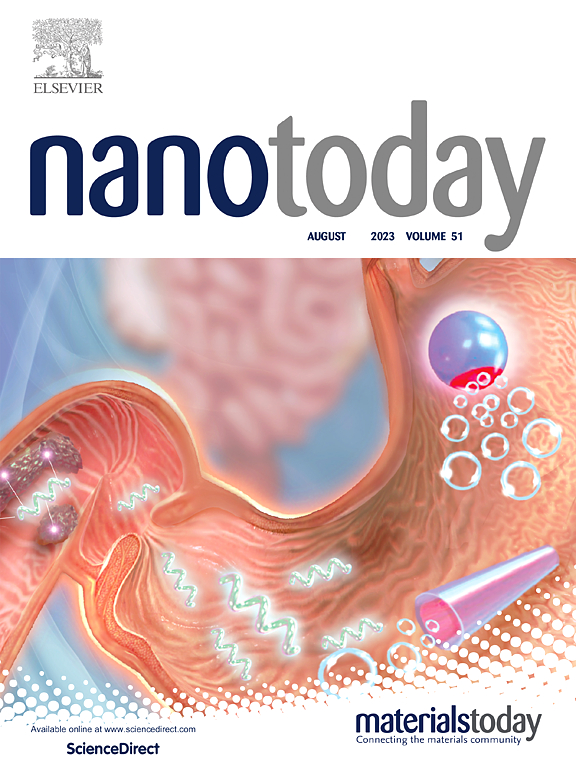The resistance of Salmonella enterica serovar Typhimurium to zinc oxide nanoparticles
IF 13.2
1区 材料科学
Q1 CHEMISTRY, MULTIDISCIPLINARY
引用次数: 0
Abstract
Zinc oxide nanoparticles (ZnO NPs) serve as promising antibiotic alternatives owing to their exceptional antibacterial properties. However, it is inconclusive whether bacteria can develop resistance to ZnO NPs under chronic exposure. In this study, we identified an acquired and irreversible resistance to sublethal concentrations of ZnO NPs, but not to Zn (II) ions, in a strain of Salmonella enterica serovar Typhimurium CVCC541 (S. Typhimurium) following prolonged exposure. Whole-population genome sequencing authenticated a phoQ mutation pertained to this heritable resistance. The phoQ G33A mutation was accompanied by a downregulation of phoQ expression, triggering a remodeling of the outer membrane (characterized by increased production of OmpF and lipopolysaccharides, as well as altered lipid properties) and enhanced biofilm formation. Accordingly, we propose that S. Typhimurium adapts to ZnO NPs exposure by fortifying its outer membrane and biofilm, thereby evolving resistance. Our findings provide an innovative paradigm for an in-depth knowledge of the antimicrobial resistance crisis.
肠炎沙门氏菌血清型鼠伤寒沙门氏菌对氧化锌纳米颗粒的耐药性
氧化锌纳米颗粒(ZnO NPs)由于其优异的抗菌性能而成为有前途的抗生素替代品。然而,在长期暴露的情况下,细菌是否会对氧化锌NPs产生抗性尚不确定。在这项研究中,我们发现在长时间暴露于伤寒沙门氏菌(S. Typhimurium)血清型CVCC541菌株中,对亚致死浓度的ZnO NPs产生了获得性和不可逆的抗性,但对Zn (II)离子没有抗性。全种群基因组测序证实了phoQ突变与这种遗传抗性有关。phoQ G33A突变伴随着phoQ表达的下调,引发外膜的重塑(特征是OmpF和脂多糖的产生增加,以及脂质性质的改变)和生物膜形成的增强。因此,我们提出鼠伤寒沙门氏菌通过强化其外膜和生物膜来适应ZnO NPs暴露,从而进化出抗性。我们的发现为深入了解抗菌素耐药性危机提供了一个创新的范例。
本文章由计算机程序翻译,如有差异,请以英文原文为准。
求助全文
约1分钟内获得全文
求助全文
来源期刊

Nano Today
工程技术-材料科学:综合
CiteScore
21.50
自引率
3.40%
发文量
305
审稿时长
40 days
期刊介绍:
Nano Today is a journal dedicated to publishing influential and innovative work in the field of nanoscience and technology. It covers a wide range of subject areas including biomaterials, materials chemistry, materials science, chemistry, bioengineering, biochemistry, genetics and molecular biology, engineering, and nanotechnology. The journal considers articles that inform readers about the latest research, breakthroughs, and topical issues in these fields. It provides comprehensive coverage through a mixture of peer-reviewed articles, research news, and information on key developments. Nano Today is abstracted and indexed in Science Citation Index, Ei Compendex, Embase, Scopus, and INSPEC.
 求助内容:
求助内容: 应助结果提醒方式:
应助结果提醒方式:


